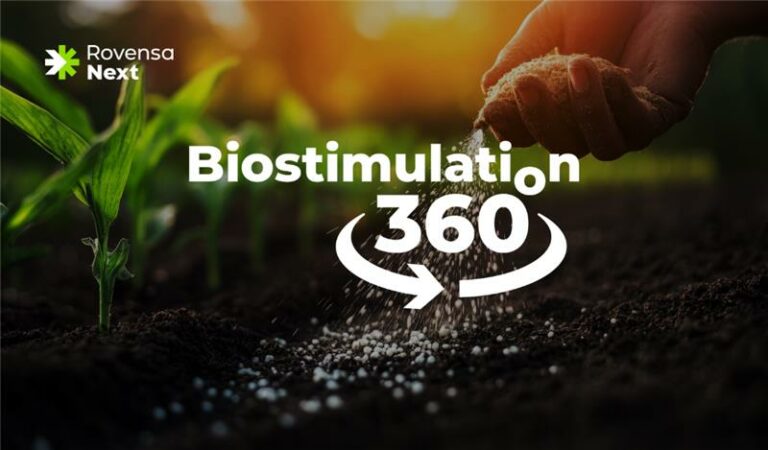Abiotic Stress in Agriculture
Abiotic stress refers to the negative impact of non-living environmental factors on crops. These stressors, including salinity, drought, and extreme temperatures, significantly reduce yield and quality. As global climatic events intensify, understanding abiotic stress and developing effective management strategies is crucial for ensuring sustainable and profitable yields for growers.
For over 30 years, The Rovensa Next group has been at the forefront of researching and developing solutions to combat abiotic stress. The Biostimulation 360 strategy represents the culmination of decades of field-proven innovation—bringing together our most effective, science-backed approaches for growers.
Types of Abiotic Stresses
Want to know more about Abiotic Stress?
Learn more🔗Abiotic stress in agriculture | Rovensa Next Australia & New Zealand
Climatic Stress
Climatic stress constitutes the most significant and consequential category of abiotic stressors affecting crop productivity. Variations in water availability and temperature conditions frequently determine the difference between a profitable and an unprofitable season.
Drought, cold and heat stress are the primary abiotic stress threat in agriculture.
Drought stress is widely recognized as one of the most severe abiotic challenges, critically impairing crop growth, yield potential, and survival while becoming increasingly prevalent in many agricultural regions.
Drought stress events are usually accompanied by heat, UV light stress, and will trigger a reduction or complete cessation of key metabolic processes, such as:
- Reduced transpiration and photosynthesis
- Reduced or stopped nutrient absorption
- Supressed root and vegetative growth
- Flower or fruit abortion
- Early senescence
- Overproduction of Reactive Oxygen Species
Such impactful events, can be mitigated with our Biostimulation 360 strategy:
Mode of Action in Time

Phylgreen 200 exerts a primactive effect by preparing the plant in advance of stress, activating internal mechanisms associated with stress tolerance. Its application initiates metabolic adjustments that enhance the plant’s resilience to drought, late frost, and heat stress.
The presence of mannitol, alginates, multiple polysaccharides, and polyphenolic antioxidants found in Phylgreen 200 supports the plant’s intrinsic ability to cope with stress. For optimal efficacy, it should be applied between 9 and 2 days prior to anticipated stress events.
Want to know more about Primactive?
- In cases where Phylgreen 200 could not be applied preventatively, or when abiotic stress events such as drought, cold, or heat are prolonged and severe, we recommend the use of our Curative solution—Delfan Plus V. Enriched with L-α free amino acids, Delfan Plus V supports the plant’s metabolic activity during stress and promotes recovery post-stress by reinforcing its natural defence mechanisms. It helps mitigate the harmful effects of oxidative stress by reducing reactive oxygen species (ROS), enhances nitrogen assimilation into amino acids, and provides an essential energy boost to sustain physiological functions.
Want to know more about Curactive?
Mode of action in place:
- Our Humic Acid Range has been carefully formulated to stimulate root development. The application of Humifirst promotes the formation of finer root systems, thereby enhancing the plant’s capacity to absorb water and nutrients. In addition to absorption, roots serve as vital energy and carbohydrate reserves during stress. By promoting root expansion, Turboroot WG helps increase these internal reserves, equipping plants with the resources needed to better withstand and recover from adverse conditions. During periods of drought stress, when soil moisture is limited, the enhanced rooting promoted by Humifirst, Humifirst WG and Turboroot WG plays a critical role in improving plant resilience.
We know it works – Humifirst improved the emergence and development of potato during a high drought stress period.
- Potassium supplied by Amifol K plays a vital role during periods of drought stress. As the key nutrient involved in water regulation, internal transport, and stomatal function, potassium is essential for maintaining physiological balance. During drought and heat conditions, plants naturally reduce transpiration and photosynthesis to conserve water. However, a complete shutdown of these processes can lead to plant collapse. Amifol K helps moderate this response—supporting the plant’s ability to regulate transpiration without entirely halting its metabolic activity.
Salinity, Sodicity and Soil Reduced Fertility
Salinity is an increasingly common stress factor in agriculture, driven by declining water quality, excessive fertilizer use, and the degradation of soil organic matter. Over time, these factors contribute to the buildup of soluble salts—including sodium, chlorides, sulfates, and carbonates—leading to conditions of salinity and sodicity. Elevated salt concentrations in the soil can significantly impair a plant’s ability to absorb water and nutrients, ultimately restricting growth and development.
Want to learn more about this subject?
To mitigate the negative effects of Salinity and Sodicity, Biostimulation 360 bring again a strategy based on:
Mode of action in plant:
Since salinity and sodicity exert ongoing stress on crops, regular applications of Phylgreen 200 throughout the year help maintain plant resilience year-round. By activating specific genetic expression pathways, Phylgreen 200 triggers a metabolic response that enhances the plant’s ability to self-regulate under saline conditions.
Applications of Selective herbicides and Growth Regulators
In many broadacre crops, growers apply selective herbicides after emergence to control weeds. While these herbicides are designed to target weeds, they can still trigger a degree of phytotoxic stress in the crop—temporarily reducing photosynthesis, disrupting amino acid synthesis, and affecting key metabolic pathways. As a result, it’s common to observe a slowdown in crop growth for about a week post-application. With Biostimulation 360, growers can help shorten this recovery period. The Curactive effect of Delfan Plus V supports metabolic recovery and helps regain some of the yield potential lost during this stress phase.
We know it works – Delfan Plus recover a part lost yield in sunflower.
The impact of abiotic stress on crops has increased substantially in recent years due to accelerating climate disruption and increasing environmental pressures from human activity. As global climate patterns shift, the need to understand and mitigate these challenges has become critical for both growers and the broader agricultural value chain. Biostimulation 360 offers an effective, science-driven solution—positioning Rovensa Next as a trusted partner in securing sustainable, resilient, and profitable harvests.”




















